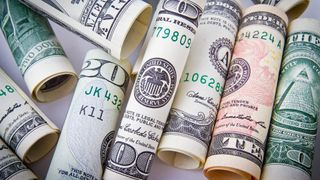Millions of Americans are also still waiting on the delivery of stimulus check 2 (opens in new tab), which was signed off at the end of December and promises to pay qualifying individuals up to $600 to bolster household finances and hopefully ward off the need to borrow via other means to cover bills. A third stimulus check (opens in new tab), which could be worth up to $1,400, is also soon to be pushed out, assuming the proposal can negotiate a path through Congress.
Who is missing out on their stimulus check?
With more than ten million Americans (opens in new tab) out of work, and millions more either struggling with their mortgage (opens in new tab), rent or debt due to the pandemic, President Biden made it one of his first tasks to issue an Executive Order to help those most in need. In particular, the new President wants to ensure the eight million households who still have not received the financial assistance to which they are entitled under the first stimulus payment quickly receive what they are owed. Frustratingly, those most at risk of missing out on the payments - which could be worth up to $1,200 to qualifying individuals - are predominantly low-income households to whom the money would make the most difference. Inevitably, it is the same group of people that are most likely to miss out on the second payment - and the third too, when it comes - unless something changes.
Making stimulus check delivery easier
Responding to the President’s call for action, the Treasury Department has outlined plans (opens in new tab) to expand and improve the delivery of stimulus payments. In the coming weeks, the department says it will work with the IRS on creating more online tools and “simple options” for people to claim their payments. This will include building on the online non-filer tool (opens in new tab) that was introduced last year, through which those who have no need to file taxes (opens in new tab) - which is one way to claim your payment - could submit their personal information and so receive their check. Efforts will also be stepped up to reach people who may not have access to the internet or are non-English speakers, and to contact households who have been issued payments, but did not cash them. While the vast majority of payments were sent to people’s online bank (opens in new tab) accounts directly, many millions were also distributed by checks and debit cards in the mail. Recognizing that hundreds of thousands of these have not been cashed or activated, perhaps because the recipient mistakenly discarded the delivery (opens in new tab), the Treasury says it will either reissue unclaimed benefits or reach out and encourage people to claim the benefit when filing their tax return in the coming months.
